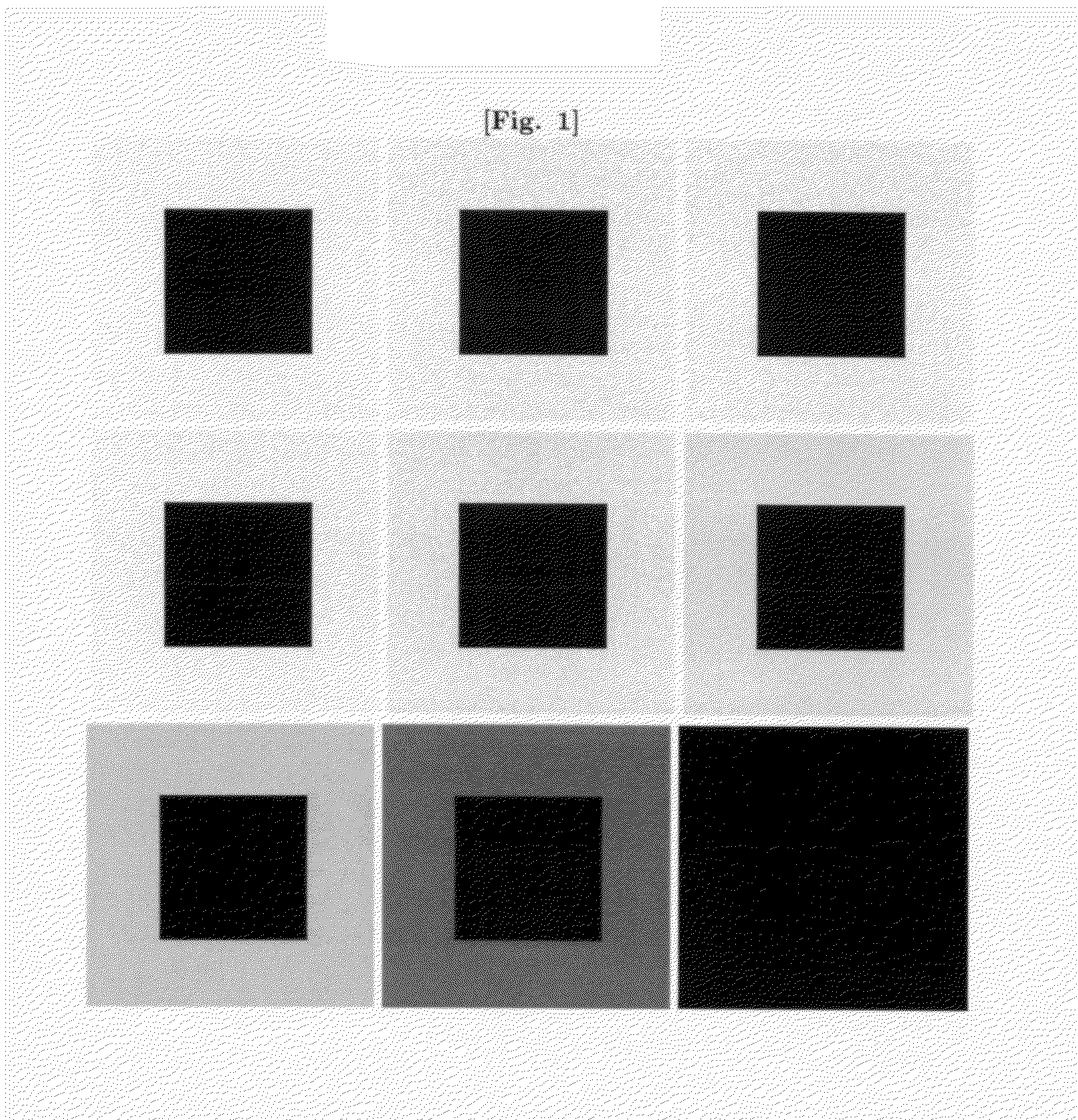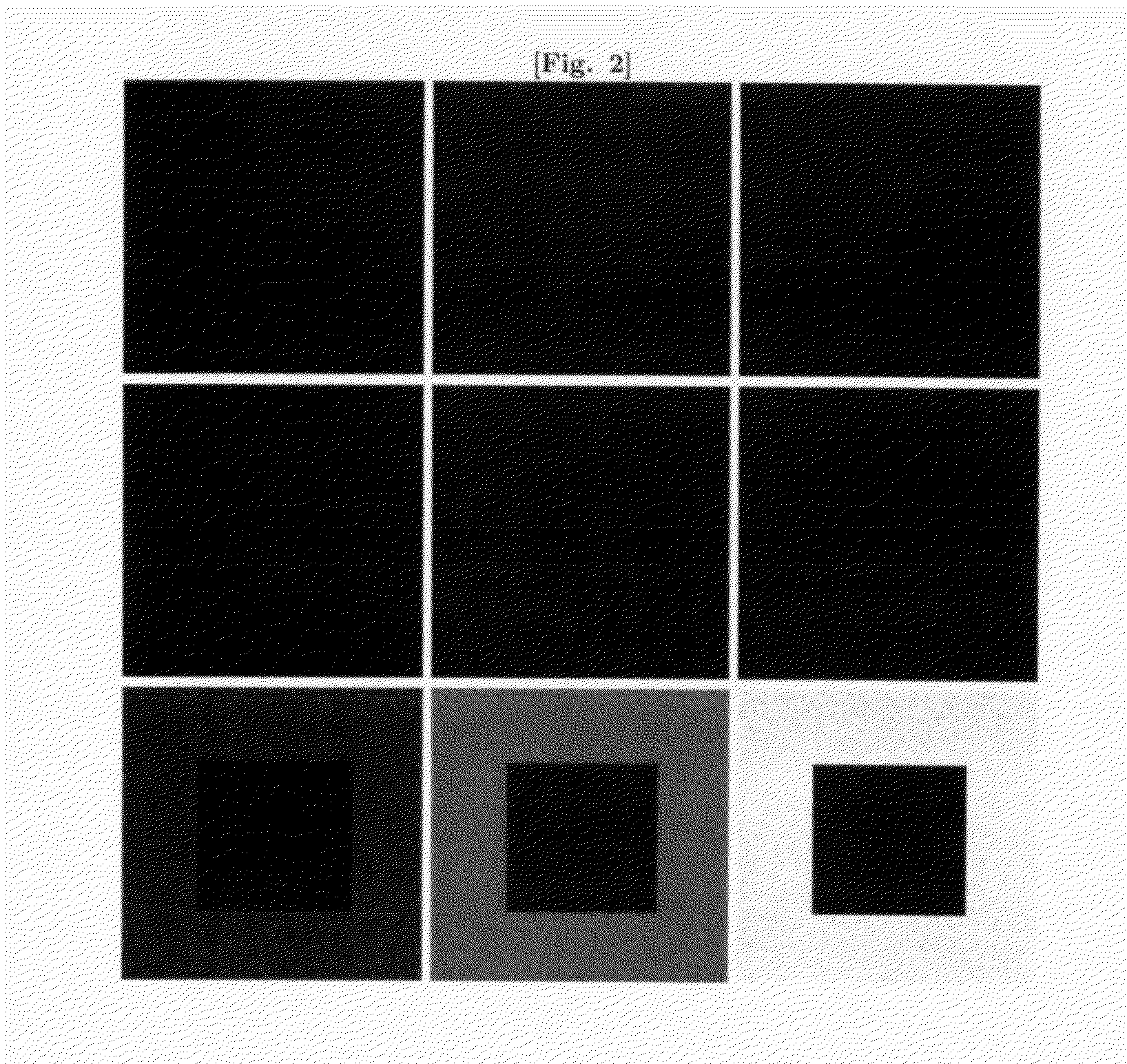Method for data compression and inference
a data compression and inference technology, applied in the field of data compression and inference, can solve the problems of difficult estimation of entropy, inability to prove non-trivial representations are minimal, and practical obstacles to calculating the kolmogorov minimal sufficient statistic, etc., to achieve competitive compression performance, high compression, and higher level of application-specific compression
- Summary
- Abstract
- Description
- Claims
- Application Information
AI Technical Summary
Benefits of technology
Problems solved by technology
Method used
Image
Examples
example 1
[0182]First, consider the second-order critical depth of a simple geometric image with superimposed noise. This is a 256×256 pixel grayscale image whose pixels have a bit depth of 8. The signal consists of a 128×128 pixel square having intensity 15 which is centered on a background of intensity 239. To this signal we add, pixel by pixel, a noise function whose intensity is one of 32 values uniformly sampled between −15 and +16. Starting from this image, we take the n most significant bits of each pixel's amplitude to produce the images An, where n runs from 0 to the bit depth, 8. These images are visible in FIG. 1, and the noise functions that have been truncated from these images are showcased in FIG. 2.
[0183]To estimate K(An), which is needed to evaluate critical depth, we will compress the signal An using the fast and popular gzip compression algorithm and compress its residual noise function into the ubiquitous JPEG format. We will then progress to more accurate estimates using ...
example 2
[0204]In addition to the utility normally associated with a more parsimonious representation, the resulting image is more useful in pattern recognition. This aspect of the invention is readily demonstrated using a simple example of image pattern recognition.
[0205]Critical signals are useful for inference for several reasons. On one hand, a critical signal has not experienced information loss—particularly, edges are preserved better since both the ‘ringing’ artifacts of non-ideal filters (the Gibbs phenomenon) and the influence of blocking effects are bounded by the noise floor. On the other hand, greater representational economy, compared to other bit depths, translates into superior inference.
[0206]We will now evaluate the simultaneous compressibility of signals in order to produce a measure of their similarity or dissimilarity. This will be accomplished using a sliding window which calculates the conditional prefix complexity K(A|B)=K(AB)−K(B), as described in the earlier section ...
example 3
[0216]Another possible embodiment of the invention compresses the critical bits of a data object losslessly, as before, while simultaneously compressing the entire object using lossy methods, as opposed to lossy coding only an error or residual value. In principle, this results in the coding of redundant information. In practice, however, the lossy coding step is often more effective when, for example, an entire image is compressed rather than just the truncated bits. Encoding an entire data object tends to improve prediction in the lossy coder, while encoding truncated objects often leads to the high spatial frequencies which tend to be lost during lossy coding. Such a redundant lossy coding of the original data often results in the most compact representation, making this the best embodiment for many applications relating to lossy coding. This may not always be the case, for instance, when the desired representation is nearly lossless such a scheme may converge more slowly than on...
PUM
 Login to View More
Login to View More Abstract
Description
Claims
Application Information
 Login to View More
Login to View More - R&D
- Intellectual Property
- Life Sciences
- Materials
- Tech Scout
- Unparalleled Data Quality
- Higher Quality Content
- 60% Fewer Hallucinations
Browse by: Latest US Patents, China's latest patents, Technical Efficacy Thesaurus, Application Domain, Technology Topic, Popular Technical Reports.
© 2025 PatSnap. All rights reserved.Legal|Privacy policy|Modern Slavery Act Transparency Statement|Sitemap|About US| Contact US: help@patsnap.com



